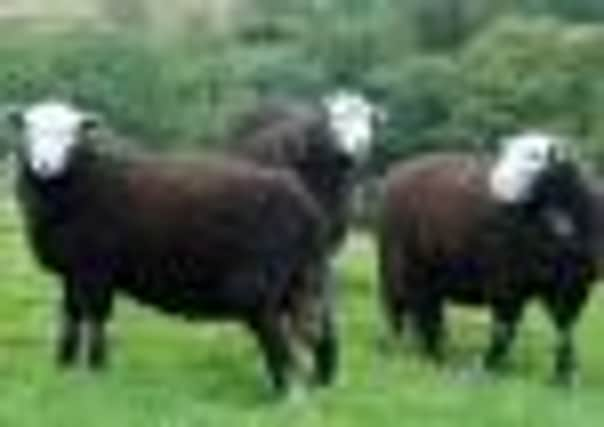Frozen lamb has preserved breed in mint condition


Dianna Bowles works at York University, where she is Professor of Biochemistry, but at home, in Upper Nidderdale, she had started to keep Herdwick sheep – a breed probably introduced to England by the Vikings and remarkable for black lambs which change colour as they mature to have white heads and dark blue-grey coats.
It is not rare but almost all its 55,000 representatives are within 15 miles of Coniston in the Lake District, which was at the centre of the storm in 2001. The farmer who made the phone call feared the breed would be wiped out, or at least damaged by a massive reduction of its genetic resources.
Advertisement
Hide AdAdvertisement
Hide AdProf Bowles took up the mission and was put in touch with James Mylne, a Scottish vet who was one half of a little outfit called Britbreed – since absorbed into the breeding technology company Innovis. She pulled every string she knew and within a week had the money for Mylne and a team of helpers to get to work on creating a Heritage Gene Bank.
MAFF, the Ministry before Defra, perked up and pitched in, with Cumberland vet, Amanda Carson, becoming the essential link between the locals, the volunteers and the Ministry. They began to collect semen and embryos from hundreds of bloodlines. They were mainly Herdwicks, but also some Rough Fells and Dalesbreds in threatened flocks. Technically, they were doing nothing new, but it was an amazing operation under intense pressure.
MAFF was frightened it would deep-freeze potential foot and mouth carriers and the fragile “germplasm” had to be collected in between the ever-changing boundaries of the infected zones and quarantined and cleared before movement. Barns had to be equipped with liquid nitrogen to keep the material preserved.
As things turned out, all the breeds survived the epidemic but a high percentage of the Herdwicks were taken out by precautionary culling and some of the bloodlines saved into the gene bank were among them.
Advertisement
Hide AdAdvertisement
Hide AdThe Heritage Gene Bank turned into The Sheep Trust, with longer-term goals, but the potential lambs from 2001 remained in the Innovis freezers.
Last year’s tenth anniversary of the crisis seemed like a good time to break into the stores and Herdwick ewes were artificially inseminated at the Cockermouth farm. But to replicate the circumstances of a worst-case scenario, some ready-fertilised Herdwick embryos were also implanted in two surrogate mothers of another breed – Mules belonging to neighbours of Prof Bowles, the Church family, on Limley Farm at Lofthouse, Nidderdale.
Evie Church, now 14, nursed the mothers through to successful delivery of three female Herdwick lambs last April and just before Christmas, Prof Bowles took them back to the Lakeland fells they came from and closed the circle.
The rest of the 2001 samples remain on ice and some will probably be brought back to life in another 10 years, for a further check of the system. Meanwhile, Prof Bowles is keeping up the pressure for a comprehensive national plan to safeguard livestock genes.
Advertisement
Hide AdAdvertisement
Hide AdThe Sheep Trust has determined that other breeds at risk because of geographical clustering include the South Wales Mountain, Rough Fell, Romney, Dalesbred, Lonk, Shetland, Devon Closewool, Exmoor Horn and several types of Cheviot.
“It is important,” said Prof. Bowles yesterday, “to make the point that biodiversity matters as much to farming as to conservation of wildlife such as birds and snails”.
The Sheep Trust website is at www.thesheeptrust.org